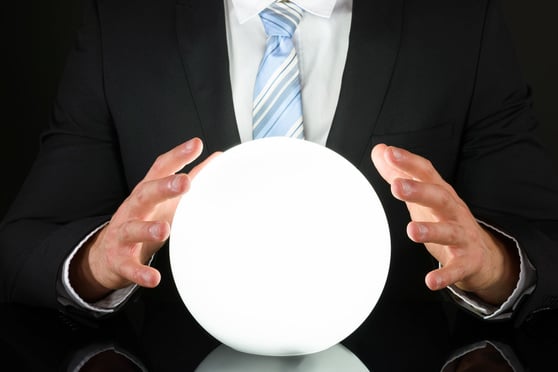Features

Takeaways from the Recent Qualcomm Decision
The DOJ's intervention, and the judge's ultimate decision, has exposed tensions between the DOJ and FTC, and within the FTC itself, and public scrutiny is far from over as the case heads to the Ninth Circuit on appeal.
Features

States Not Immune from PTAB Proceedings, Federal Circuit Rules
Fifteen states had argued that they and their public universities shouldn't have to expose their patents to validity review at the patent trial and appeal board.
Columns & Departments
IP News
Federal Circuit Finds District Court Erred in Analysis of Motivation to Combine Prior Art References, Yet Affirms Ultimate Conclusion of Non-obviousness Due to the Lack of a Reasonable Expectation of Success<br>Federal Circuit Rules that Issue Preclusion Bars a Party from Arguing in an Appeal of an Inter Partes Review Decision an Issue Previously Decided in Another Inter Partes Review Proceeding that Was Not Appealed
Features

As Section 101 and the Progeny of Mayo and Myriad Continue to Wreak Havoc on Portfolios, How Is The Life Sciences Industry Fighting Back?
Since the U.S. Supreme Court decided Mayo and Myriad, the Federal Circuit has expanded the holdings and invalidated more patents directed to biological discoveries. If the newly discovered correlations and properties of what is found in nature cannot be patented, what strategies for protection are left for companies doing biological research?
Features

IPR Estoppel: The Present and the Future
IPRs have now been conducted for several years, and litigation has ensued over the procedures by which they are conducted. Decisions have been rendered by the U.S. Supreme Court and the U.S. Court of Appeals for the Federal Circuit, which have resolved some issues, created others, and altered procedures.
Columns & Departments
IP News
Federal Circuit Declines to Follow Patent Office's Subject Matter Eligibility Guidance In Affirming Trial Court's Decision That Claims Are Directed to Patent-Ineligible Subject Matter
Features

When Alice Leaves Software in Wonderland: Review the Terms of Use
That least-read contract — the Terms of Use — can be an effective (albeit the last) weapon in the arsenal of a company trying to protect unpatented software technology while providing on-line services.
Columns & Departments
IP News
SCOTUS Confirms that Secret Sales Continue to Qualify as Prior Art Under the AIA<br>New York District Judge Extends Estoppel Under §315(e) to Grounds Not Raised in Petition for <i>Inter Partes</i> Review
Features

The USPTO Brings New Guidance to the Section 101 Quandary
<b><i>Part Two of a Two-Part Article</b></i><p>USPTO Attempts to Provide Greater Clarity for Patent-Eligible Subject Matter
Features

Patent Eligibility Remains Uncertain — Especially for the Life Sciences — Even After Recent Federal Circuit Decisions and Efforts By the USPTO to Bring Clarity
Part One of a Two-Part Article Congress is empowered to create a patent system to promote the useful arts, and it has enacted laws to create a patent system that encourages innovation. Balancing that power, however, the courts in recent years have tried to rein in the scope of the patent right by limiting the scope of patent-eligible subject matter.
Need Help?
- Prefer an IP authenticated environment? Request a transition or call 800-756-8993.
- Need other assistance? email Customer Service or call 1-877-256-2472.
MOST POPULAR STORIES
- The DOJ's New Parameters for Evaluating Corporate Compliance ProgramsThe parameters set forth in the DOJ's memorandum have implications not only for the government's evaluation of compliance programs in the context of criminal charging decisions, but also for how defense counsel structure their conference-room advocacy seeking declinations or lesser sanctions in both criminal and civil investigations.Read More ›
- Bankruptcy Sales: Finding a Diamond In the RoughThere is no efficient market for the sale of bankruptcy assets. Inefficient markets yield a transactional drag, potentially dampening the ability of debtors and trustees to maximize value for creditors. This article identifies ways in which investors may more easily discover bankruptcy asset sales.Read More ›
- Use of Deferred Prosecution Agreements In White Collar InvestigationsThis article discusses the practical and policy reasons for the use of DPAs and NPAs in white-collar criminal investigations, and considers the NDAA's new reporting provision and its relationship with other efforts to enhance transparency in DOJ decision-making.Read More ›
- The DOJ's Corporate Enforcement Policy: One Year LaterThe DOJ's Criminal Division issued three declinations since the issuance of the revised CEP a year ago. Review of these cases gives insight into DOJ's implementation of the new policy in practice.Read More ›
- Blockchain Domains: New Developments for Brand OwnersBlockchain domain names offer decentralized alternatives to traditional DNS-based domain names, promising enhanced security, privacy and censorship resistance. However, these benefits come with significant challenges, particularly for brand owners seeking to protect their trademarks in these new digital spaces.Read More ›
